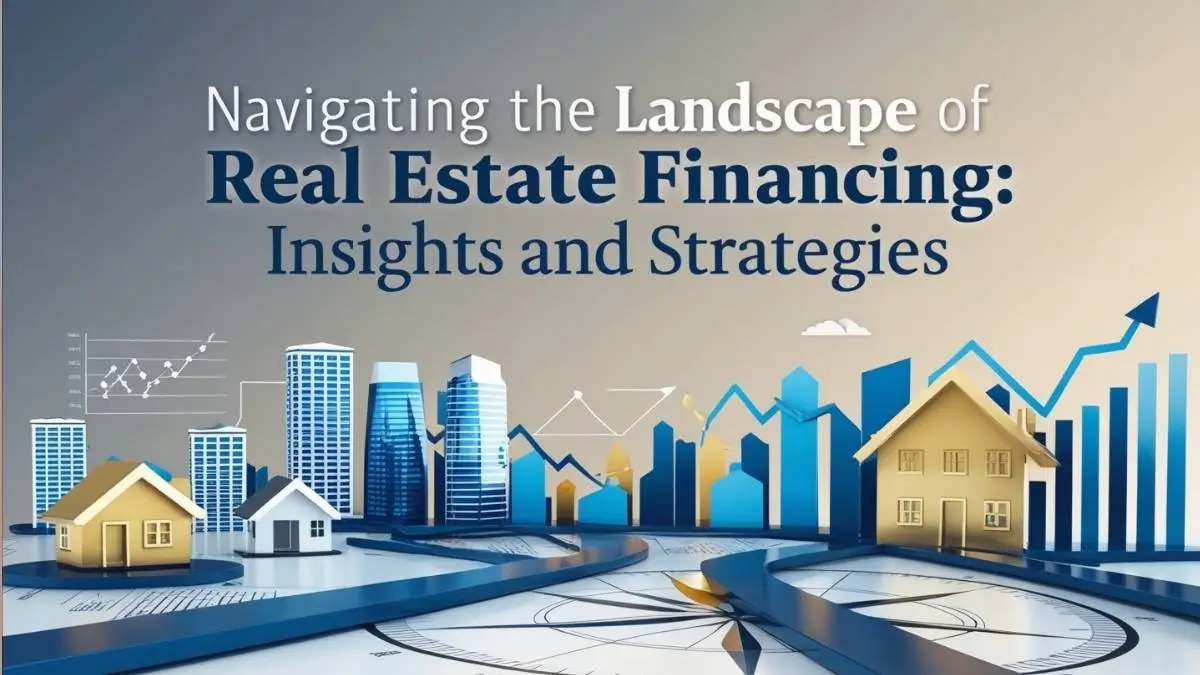BUSINESS
Navigating the Landscape of Real Estate Financing: Insights and Strategies

Introduction to Real Estate Financing
Real estate financing is essential for facilitating property ownership and investment. It’s a crucial aspect that fuels property transactions, supporting individuals and businesses in purchasing, leasing, or improving properties. As financial products become more varied and sophisticated, having a thorough understanding of these financing options is indispensable. Entities like Naples, FL real estate experts The Whitcomb Group exemplify the innovative approaches in the market designed to cater to these complex needs. Whether stepping into real estate for the first time or building upon an extensive investment portfolio, a strategic approach to financing can significantly influence your financial success.
It’s not simply about obtaining financing but choosing the right type and structure to meet specific needs and circumstances. The current landscape offers myriad solutions, making it vital for potential buyers and investors to stay informed and adaptable. A deeper understanding of financing mechanisms can enable more intelligent decision-making and potentially save money through property ownership.
Traditional Financing Methods
Conventional loans have long been the foundation of real estate financing. Banks and credit unions typically offer these, providing borrowers with reliable, structured financing options. Standard mortgages usually have long terms ranging from 15 to 30 years and competitive fixed or variable interest rates. They are particularly appealing due to well-regulated terms and relative predictability. However, these loans can be cumbersome for those without a strong credit history, as lenders often demand extensive documentation and rigorous eligibility criteria.
While traditional loans offer stability, they only sometimes accommodate the varied financial narratives of modern buyers. Strict requirements regarding income verification, credit scores, and down payments can be prohibitive. Still, conventional financing remains an attractive option for those who qualify due to its structured repayment plans and generally lower interest rates compared to more unconventional methods.
Creative Financing Strategies
Creative financing offers flexible alternatives for individuals or entities unable to meet traditional loan requirements. These include methods such as seller financing, where the property seller acts as the financier, allowing buyers to make payments directly, often bypassing banks altogether. Another popular method is lease-to-own agreements, where tenants lease a property with an option to purchase it later. Peer-to-peer lending platforms further democratize financing by connecting borrowers with individual lenders and facilitating nontraditional loan structures.
While creative financing provides more flexibility, it also introduces unique risks. Participants must navigate potentially higher interest rates and ensure comprehensive agreements protect all parties involved. Other considerations include contract enforceability and the reputational risk of less formal lending practices. Despite these challenges, creative financing expands opportunities, particularly for those outside the mainstream financial approval processes.
Understanding Interest Rates and Their Impact
Interest rates are a pivotal element in real estate financing, influencing the total cost of borrowing. They reflect the cost of borrowing money, with factors such as economic indicators, inflation, and governmental monetary policy contributing to rate fluctuations. Lower interest rates can increase affordability and expand borrowing capacity, allowing buyers to afford more expensive properties or secure better terms.
Conversely, higher interest rates can restrict borrowing power, placing financial strain on buyers and impacting overall market activity. Understanding how interest rates work and examining economic trends that affect them can help borrowers choose the right time to enter the market and make informed financial decisions. Securing favorable interest rates can significantly affect long-term savings and investment outcomes.

The Role of Credit Scores in Real Estate Financing
Credit scores are essential in shaping the real estate financing landscape. They serve as a metric for gauging an individual’s creditworthiness and influence the terms and conditions of obtainable loans. A robust credit score is often synonymous with favorable loan options, lower interest rates, and broader choices when selecting a lender. For many lenders, a high credit score equates to reduced lending risk, making it easier to negotiate better terms.
Conversely, a lower credit score could limit access to traditional financing, necessitating exploring alternative methods coupled with higher interest rates or additional security requirements. Improving one’s credit score entails addressing debts, maintaining timely payments, and judiciously managing existing credit lines, which can benefit prospective borrowers in the long run.
Opportunities in Commercial vs. Residential Financing
The dichotomy between commercial and residential real estate financing presents diverse opportunities for investors. Commercial financing typically involves larger scales, with the quantified due diligence required to assess properties intended for business use, such as retail spaces, office buildings, or large residential complexes. These financing packages often demand strategically grounded business plans and hefty financial documentation to secure.
Residential financing is comparatively more streamlined, often aimed at individuals and smaller investors focusing on personal or family homes. While it generally involves less bureaucracy, it requires a comprehensive understanding of the buyer’s financial situation to align with lender requirements. Each sector offers unique benefits: commercial ventures can yield substantial returns, while residential properties often offer predictable, stable growth patterns over time.
How Technology is Changing Real Estate Finance
With the proliferation of digital tools, technology is reshaping how real estate transactions are financed and managed. From automated mortgage processing to advanced analytics and blockchain technology managing secure transaction records, the technology aims to make processes more efficient and transparent. Online mortgage platforms have reduced the time spent on applications, enabling quicker decision-making and improving access to financial products worldwide.
The rise of fintech has introduced benefits like streamlined applications and possibly lower transaction costs, though it demands that lenders and borrowers remain vigilant about cybersecurity threats. Technology continuously reshapes markets, requiring stakeholders to stay updated with new tools and methods that can drive success in the real estate financing arena.
Future Trends in Real Estate Financing
Predicted trends in real estate financing highlight an increasing emphasis on sustainability and adaptability. Green financing options supporting eco-friendly building practices and improvements are becoming more prevalent. These align with broader sustainability goals and the growth of conscientious investing. Moreover, as global economics and policies evolve, staying informed on these shifts becomes integral for strategic planning in real estate financing.
Additionally, as demographics change and urban areas expand, financing solutions must address new demands and investment opportunities. By being aware of future trends and remaining adaptable, investors and buyers can navigate complexities with foresight and innovation, paving the way for successful real estate ventures.
-

 BIOGRAPHY7 months ago
BIOGRAPHY7 months agoBehind the Scenes with Sandra Orlow: An Exclusive Interview
-

 HOME1 year ago
HOME1 year agoDiscovering Insights: A Deep Dive into the //vital-mag.net blog
-

 HOME1 year ago
HOME1 year agoSifangds in Action: Real-Life Applications and Success Stories
-

 BIOGRAPHY1 year ago
BIOGRAPHY1 year agoThe Woman Behind the Comedian: Meet Andrew Santino Wife




























